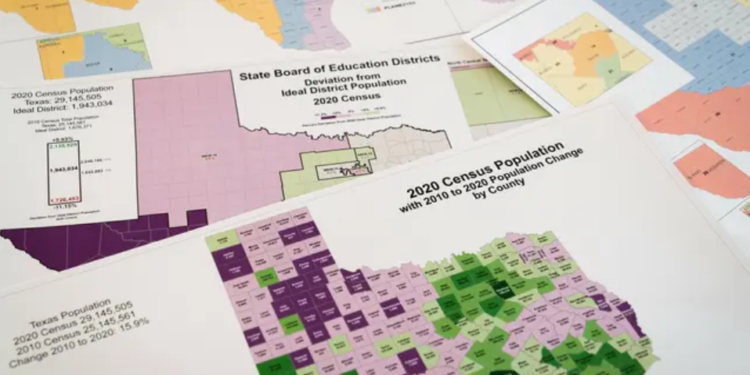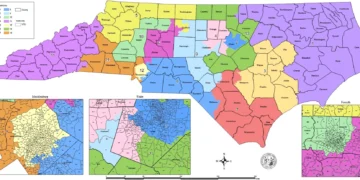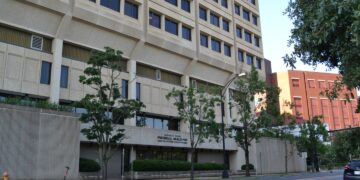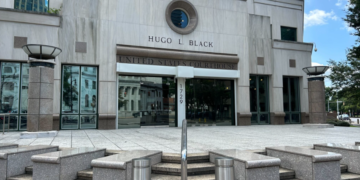May 19, 2025 Story by: Publisher
A rare mid‑decade redistricting plan has put Tarrant County at the center of a heated debate over electoral fairness and minority representation.
On May 6, commissioners voted to move forward with five new precinct maps based on 2020 census figures—well before the release of updated federal data—triggering sharp criticisms from residents, civil‑rights advocates, and local leaders who warn the changes could undercut Black voters’ influence in this now majority‑minority county.
Bypassing the Decennial Norm
Redistricting typically follows each decennial census, ensuring maps reflect the latest population counts. Yet Tarrant County’s Republican‑led commission engaged a conservative law firm to draft five options in 2025, using 2020 data rather than awaiting new U.S. Census Bureau releases—an approach critics deem premature and partisan
Draft Maps and Partisan Concerns
The five proposed maps would significantly reshape voting blocs in key precincts, notably Precincts 1 and 2, which have trended Democratic in recent election cycles. Backers, including Commissioner Tim O’Hare, argue the revisions enforce the constitutional principle of “one person, one vote” by equalizing district populations. Opponents counter that using outdated figures skews representation and masks demographic shifts that have altered the county’s makeup since 2020.
Impact on Black Communities
Since 2010, Tarrant County’s Black population has grown to roughly 16 percent of residents, concentrated in Fort Worth and Arlington. Critics warn the new maps would fracture majority‑Black neighborhoods across multiple districts, diluting their collective ability to elect preferred candidates to county and school board seats.
“They’re slicing our community into pieces,” said Monique Harris, a Fort Worth resident, at a public hearing. “This isn’t about fairness—it’s about silencing Black voices.” Harris, a Black community activist, warned that splitting majority‑Black neighborhoods across districts could mute their collective voice—echoing concerns that the maps would dilute Black electoral influence in a county that is now majority‑minority
Local NAACP leaders echo that sentiment, cautioning any reduction in cohesive Black voting blocs could weaken protections under the Voting Rights Act.
Redistricting usually follows the decennial count to reflect population shifts. Instead, Tarrant County’s GOP‑led commission hired a conservative law firm to propose five draft maps that would reconfigure voting blocs, notably in Precincts 1 and 2, areas that have trended Democratic since 2018. Critics say the timing—and reliance on aging data—raises questions about fairness.
Using 2020 census figures rather than waiting for updated U.S. Census Bureau data—prompting warnings that the effort could weaken Black neighborhoods’ electoral influence.
Critics argue the proposed maps fragment majority‑Black neighborhoods in Fort Worth and Arlington, dispersing them across multiple districts to dilute their voting power.
Elected Officials and Legal Review
Democratic Commissioner Alisa Simmons criticized the mid‑decade redraw: “Tarrant County is a majority‑minority county… We’re using 2020 numbers in 2025—it makes no sense,” she said.
Arlington Mayor Jim Ross has retained outside counsel to assess potential Voting Rights Act violations, stressing that boundary changes must be “pursuant to the law and transparent to the community.”
Next Steps and Broader Implications
Additional public forums are scheduled throughout May in Fort Worth, Arlington, and Hurst before the commissioners’ final vote on June 3. Should one of the draft maps be adopted, voters would see new precinct lines in the 2026 election cycle.
Civil‑rights groups have signaled readiness to mount legal challenges if they believe the maps infringe upon minority voting strength under federal law.
As Tarrant County forges ahead with this unprecedented mid‑decade redraw, the debate spotlights a broader dilemma: how rapidly growing regions can honor equal‑population mandates while ensuring that historically marginalized communities retain their electoral power. With Texas having a history of contentious map battles and federal oversight under the Voting Rights Act, Tarrant County’s decision may reverberate across the state and beyond.
In a move rarely seen without a fresh census, Tarrant County commissioners voted on May 6 to press ahead with redrawing precinct boundaries using 2020 data—months before the new federal figures arrive—prompting fierce criticism from community members and elected officials alike.
Civil‑rights advocates are urging federal monitors to observe the process and stand ready to file legal challenges if the maps undercut Black voters’ representation. With Tarrant County now majority‑minority, the outcome of this redistricting could redefine political power in North Texas and set precedents for how fast‑growing regions balance equal population mandates with the protections of Voting Rights law.
Upcoming Community Meetings:
- Hurst: May 21, 6 p.m.
Gary Fickes Northeast Courthouse, 645 Grapevine Hwy.

















